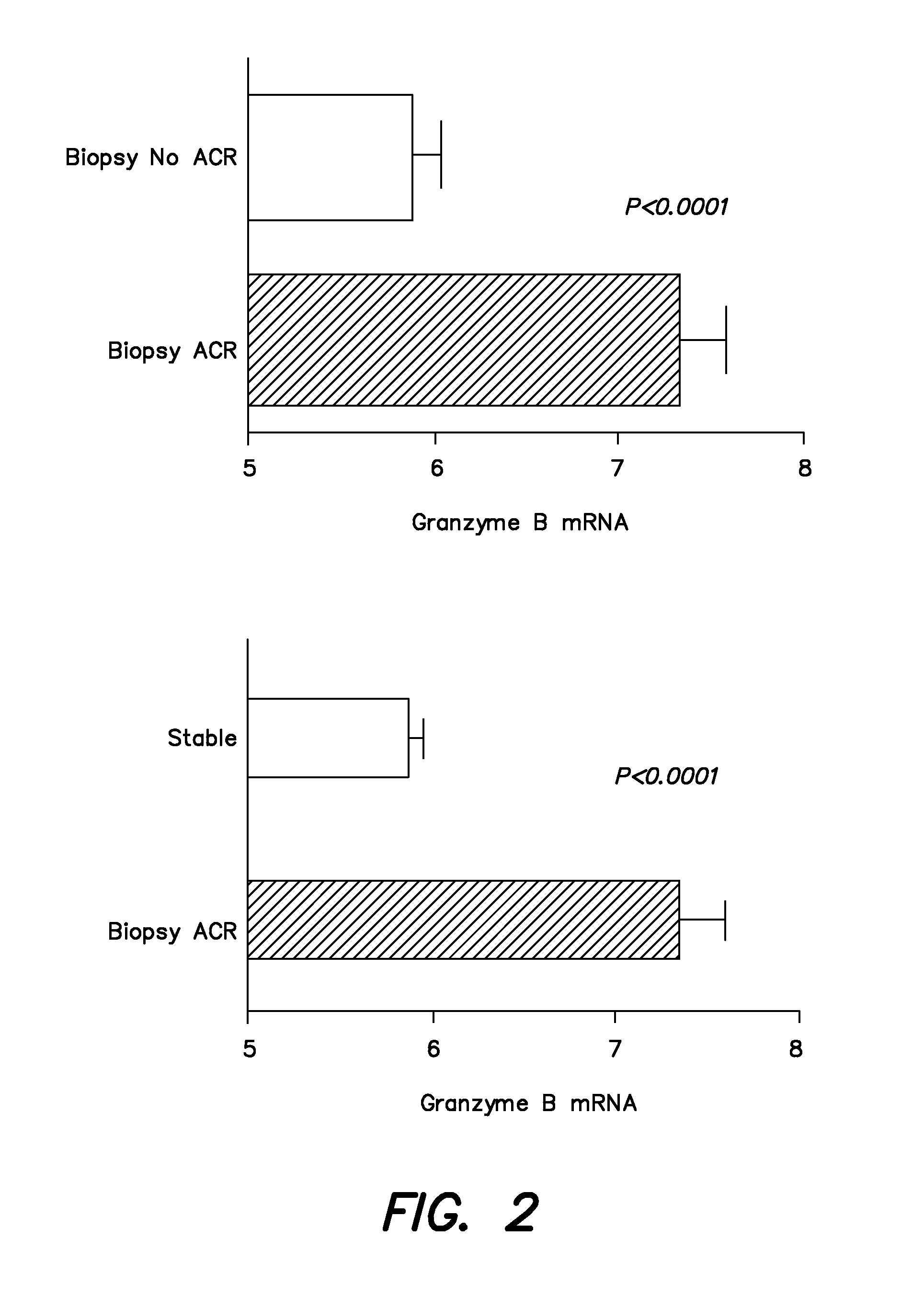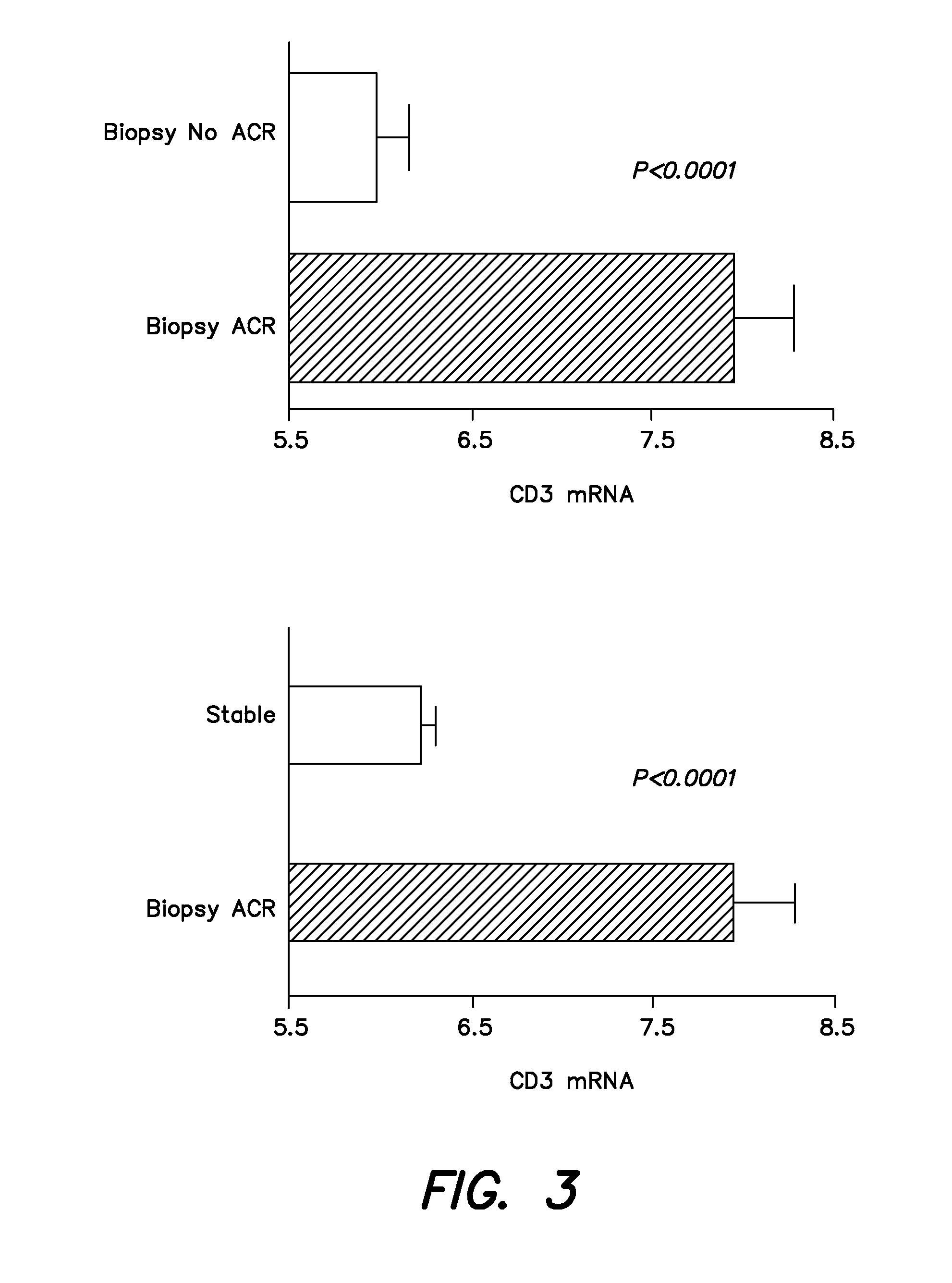Methods and compositions to predict and detect acute rejection
a technology of compositions and methods, applied in the field of methods and compositions to predict and detect acute rejection, can solve problems such as incomplete analysis, incomplete analysis, and potential confusion
- Summary
- Abstract
- Description
- Claims
- Application Information
AI Technical Summary
Benefits of technology
Problems solved by technology
Method used
Image
Examples
example 1
[0115]In the cooperative clinical trial conducted between July, 2006 and January, 2008, a total of 497 renal allograft recipients were recruited from the following participating centers: Northwestern (n=145); Cornell (n=122); Penn (n=120); Columbia (n=76); and University of Wisconsin (n=34). Urine, blood, and biopsy samples were collected during the first 12 months of transplantation as per the protocol. The recipients are to be followed up to 48 months post transplant; during this time clinical data that is related to the functional status of the allograft is collected, and any association between gene expression profiles and allograft function identified.
[0116]As of December 2008, 4218 urine samples and 318 peripheral blood samples were collected. Urine specimens collected at scheduled visits and at the time of kidney biopsies, were centrifuged and cell pellets were shipped to the Cornell PCR Core blinded to clinical information and biopsy diagnosis. A quantitative PCR assay was u...
example 2
[0166]Measurement of Messenger RNA Levels In Urine
Isolation of Total RNA from Urine:
[0167]Urine was centrifuged at 2,000g for 30 minutes. RNA was extracted from the pellet with use of a commercial kit. The yield and purity of total RNA isolated from the biologic specimens was measured using a NanoDrop ND-1000® spectrophotometer (NanoDrop Products, Wilmington, Del., USA).
[0168]Reverse Transcription for mRNA Profiling:
[0169]cDNA for mRNA profiling were prepared using TaqMan® reverse transcription reagents (Applied Biosystems, Foster City, Calif.).
[0170]Quantification of mRNAs Using Pre-Amplification Enhanced Real-Time Quantitative PCR Assay:
[0171]We have successfully adapted the TaqMan® real-time quantitative PCR assay and developed a pre-amplification enhanced real-time quantitative PCR assay that allows absolute quantification of a large panel of mRNAs from minute amounts of cDNA (e.g., 20 different mRNAs from 3 μl cDNA at 1 μg of total RNA in 1000). This assay is comprised of two s...
PUM
| Property | Measurement | Unit |
|---|---|---|
| Time | aaaaa | aaaaa |
| Time | aaaaa | aaaaa |
| Time | aaaaa | aaaaa |
Abstract
Description
Claims
Application Information
 Login to View More
Login to View More - R&D
- Intellectual Property
- Life Sciences
- Materials
- Tech Scout
- Unparalleled Data Quality
- Higher Quality Content
- 60% Fewer Hallucinations
Browse by: Latest US Patents, China's latest patents, Technical Efficacy Thesaurus, Application Domain, Technology Topic, Popular Technical Reports.
© 2025 PatSnap. All rights reserved.Legal|Privacy policy|Modern Slavery Act Transparency Statement|Sitemap|About US| Contact US: help@patsnap.com



